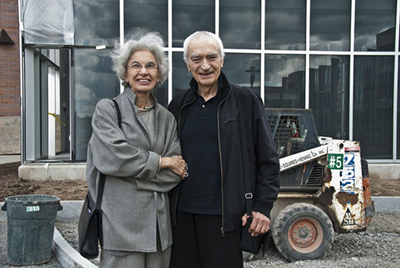Vignelli, a celebration

Design Observer are running a week-long celebration of Lella & Massimo Vignelli, with some proper interesting stuff from the two designers. The republished interview of Massimo and Ed Benguiat especially.
It’s probably something to do with how California-centered the tech industry is, but I’ve often tried to wrap my head around how I feel about differing pan-Atlantic attitudes towards design and modernity — usually after a few too many beers — but Massimo manages to explain it with far more restraint and historical awareness than I’ve even come close to:
From my point of view, one of the most unfortunate things that happened in the ’30s was the exhibition called “International Style” at the Museum of Modern Art. It was the official introduction of modern architecture in the U.S. In Europe, however, the movement didn’t develop as a style; it was a revolt against the philosophical issues of the Victorian time — all the early stages of industrialization when profit was the only motivation for doing things. When the Modern movement was born in Europe, it was really to provide alternatives that were rooted in the essence of the new time. This was exactly the same kind of philosophical change that happened in the Renaissance. When the Modern movement arrived in the U.S., it came during the Depression, and it came packaged by MoMA and put together by people who have throughout their life switched from one style to another. That’s what Philip Johnson has been doing. He went from classicism to Mies-things to gothics. Once, I visited his office and on one desk they were doing things in a neo-romanesque style, and on another a neo-gothic skyscraper, and on another a deconstructionist building. I thought I had made a wrong turn; I thought I was in Bloomingdale’s.
In other words, when industrial design was born in this country (the U.S.), it was born not as the answer to industrialization — not as a working things out according to the tools and the issues and the problems — but basically as an incentive to sales — exactly the same kind of thing which has been done by a lot of other people.
Massimo Vignelli, Massimo Vignelli vs. Ed Benguiat
And of course, his approach to typefaces:
One of the things I always say is that, for me, typography has very little to do with typefaces. Typography is structure. We structure the page, centered or flush left, or on a grid. And the lines we draw in are just lines; they’re not type. Therefore, to put so much emphasis on the type is out of place.
Massimo Vignelli, Massimo Vignelli vs. Ed Benguiat
If you want to chat more about stuff like this, send me an email or get in touch on Twitter.
You can pretend it's 2005 and subscribe to my RSS feed